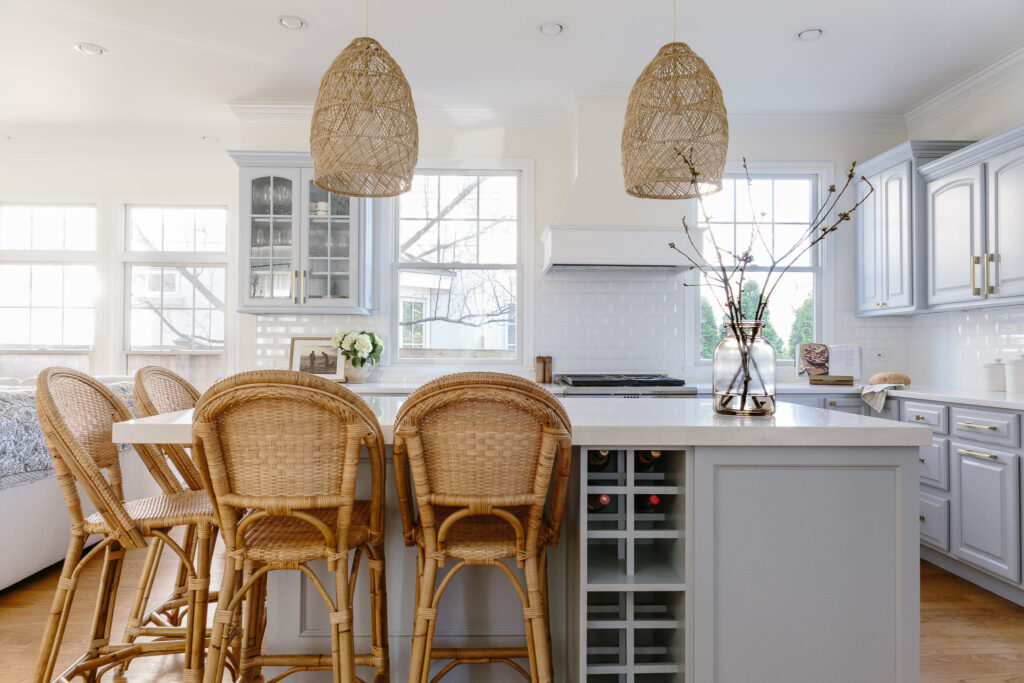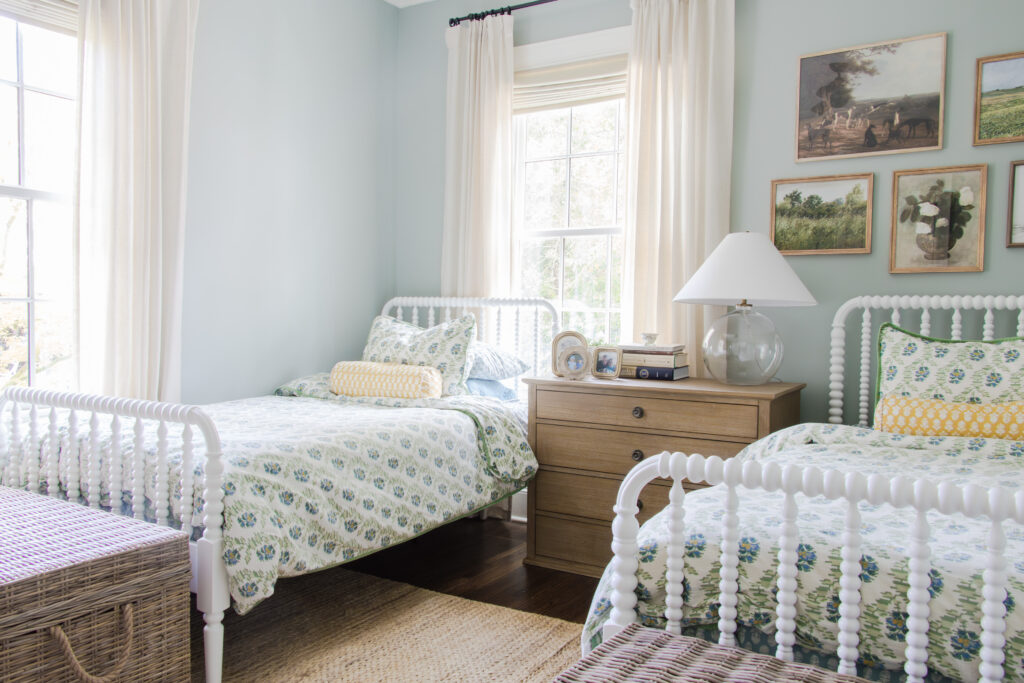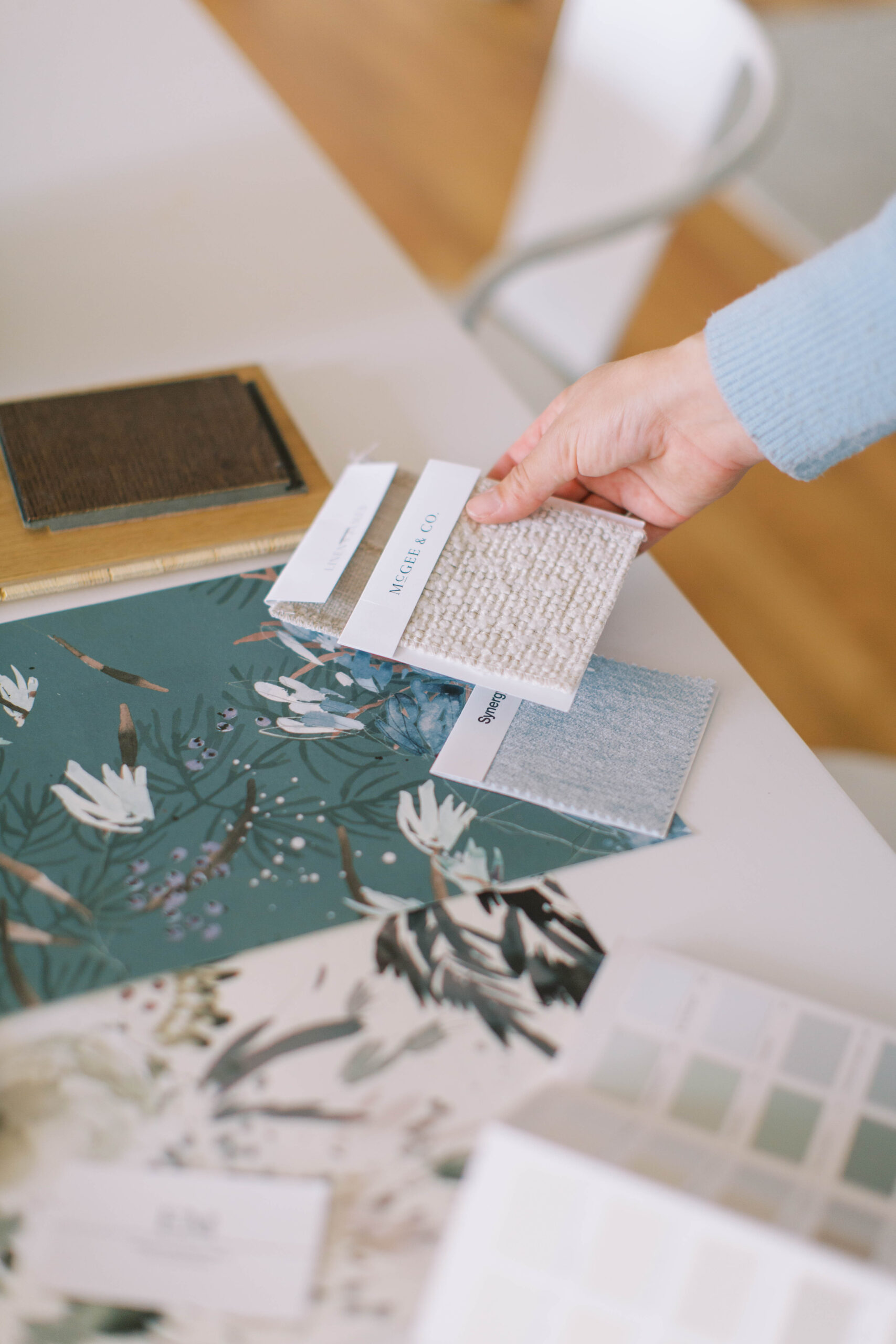You’ve probably been there: you’re picking out paint colors, and your spouse—who usually has trouble picking matching socks—suddenly has strong opinions about the wall color. It’s easy to get frustrated when one partner wants to weigh in on a design decision without having a solid understanding of the details—but it’s a common challenge many couples face.
I decided to write this post after a friend recently asked me what to do when both spouses want a say in a design decision but have differing views. And honestly, this question comes up often with clients! Couples don’t always share the same tastes, and during a major renovation or new construction project, it can get stressful. The good news? You’re not alone. Many hire a designer specifically to help blend both of their visions together.
One contractor I work with jokes that he refers clients to a designer to ‘help save marriages.’ He says, ‘You can either spend the weekend arguing with your spouse over tile or hire someone else to make the decision and save yourself the stress.’ And he’s right! While I’m definitely not a marriage counselor, I can certainly offer a few tips & guidance to help navigate design decisions more smoothly.

Photo by Christi Marcheschi
1. Use Visual Aids to Communicate Your Vision & Find Common Ground
When it comes to design, sometimes words alone just don’t do justice to the vision you have for your space. If one of you is passionate about a specific design element—whether it’s a bold wall color, a certain type of tile, or a unique furniture style—and the other isn’t quite sold on it, visual aids can be a game-changer. Showing your spouse a picture of exactly what you’re imagining helps bridge the gap between idea and reality. It’s easier to grasp a vibe when you can actually see it, rather than just hear a description.
Think of it this way: If you’re set on using a soft, muted olive green for your living room walls, but your partner isn’t sure about it, seeing that exact shade in an inspiring room photo can help them understand what you’re envisioning. It’s not just about the color itself, but the feeling it creates. You can point out how the color brings a grounded, calming vibe to the space, or how it beautifully complements the warm wood furniture you both love. When your spouse can visualize how it fits into the broader design, it becomes easier to appreciate the potential impact.
Sometimes, it’s also about showing how a design element can create a larger mood or atmosphere in a room. For example, let’s say you’re debating whether to add a statement light fixture to the entryway. Rather than simply saying, “I think it’ll look great,” you could show a few images of entryways with similar lighting, explaining how it transforms the space by adding a dramatic focal point or a welcoming, cozy vibe.
Visual aids don’t just stop at photos—they can also include fabric swatches and samples (of wood & metal finishes). The more concrete you can make your ideas, the easier it becomes to make decisions. Plus, it gives your spouse something to react to and build from. You can also invite them to share their own images, helping them feel more involved in the process, rather than feeling like they’re simply “approving” your vision.
Another helpful strategy is to gather images of things you don’t like. This can be just as valuable as collecting things you do love, as it can give your spouse clarity on what you’re hoping to avoid. Whether it’s the wrong shade of blue or a style of furniture that doesn’t fit the vibe, seeing those images can help everyone get on the same page about boundaries and preferences.
Ultimately, the goal is to have a visual dialogue—by sharing inspiration images, mood boards, and even examples of what you don’t want, you both can better align on what feels right for your space. Once your spouse sees the possibilities through visuals, the conversation can shift from “I’m not sure about this” to “I see what you mean!” and the design process becomes that much easier.
2. Work Together to Prioritize Key Pieces
While it’s important to address design preferences, a budget conversation often becomes a natural extension of design disagreements. If you and your spouse aren’t quite on the same page budget-wise, that’s totally okay! It’s very common for partners to have different ideas about what’s worth splurging on and where to save. For example, one person may want to invest in a high-quality sofa, while the other would prefer to keep costs down on furniture and focus on upgrading finishes.
Here’s where compromise (and strategy) comes into play. You might find common ground by deciding to prioritize one or two key items that both of you truly care about, like a beautiful sectional for your family room or a gorgeous dining table for hosting guests. You could save in other areas—like accent pieces or light fixtures—that don’t have as much impact on the space as a whole.
In our studio, we often create Investment Estimates to review your budget in detail before moving forward with selections. This ensures you’re both aligned on priorities and feel confident that the final choices reflect both your style preferences and budget goals.
3. Bring in a Designer to Help Blend Your Styles
If you and your spouse have different design preferences, working with a designer can be a game-changer. We’re able to help take two distinct styles and blend them in a way that feels like a seamless combination of both. Whether one of you loves sleek, modern pieces and the other prefers something more traditional, hiring a designer can help you find common ground without anyone feeling like they’re sacrificing their vision.
Within our design studio, we begin a project by reviewing any inspiration images you both might have gathered—whether that’s Pinterest boards, magazine clippings, or photos of spaces you love. This gives us a clear sense of the overall style, mood, and key elements you’re both drawn to, so we can begin tailoring a design that reflects your tastes. From there, we’ll help identify the common threads between your styles and find ways to merge them into a cohesive look. Instead of choosing between mid-century modern and vintage charm, for example, we might suggest blending modern furniture with traditional textiles or adding contemporary touches to classic pieces.

Photo by Erin Boone Photography
Finding the balance can take time, but you can get there! Sometimes, a fresh set of eyes can help clarify things and make it easier to find common ground.
Planning a furnishing refresh, renovation, or construction project in the near future? Share more about your project here, and we’ll be in touch!
